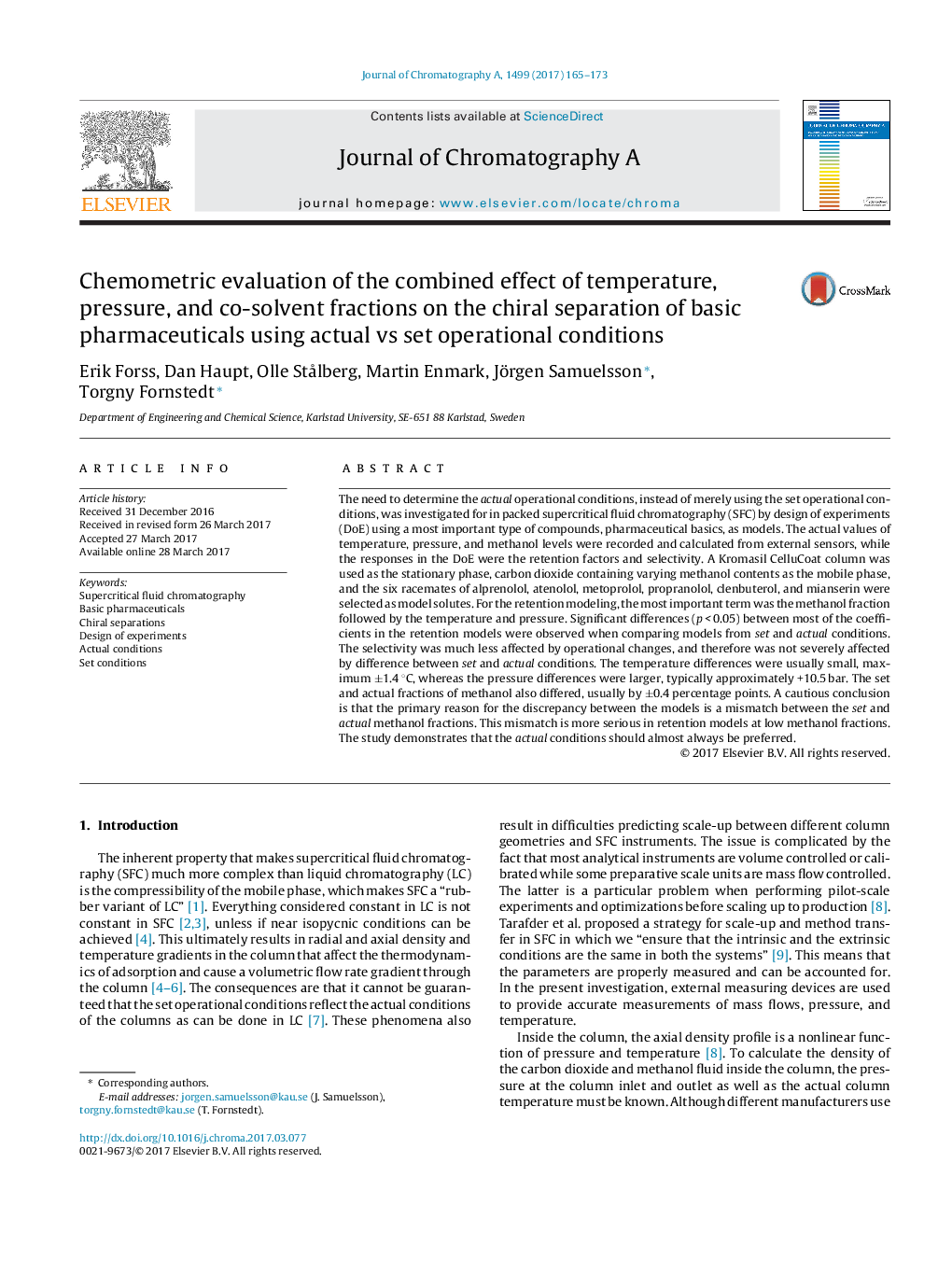| کد مقاله | کد نشریه | سال انتشار | مقاله انگلیسی | نسخه تمام متن |
|---|---|---|---|---|
| 5135177 | 1493427 | 2017 | 9 صفحه PDF | دانلود رایگان |

- Six pharmaceutical compounds were used as chiral model compounds.
- Combined effects of pressure, temperature, and modifier fraction were investigated.
- The fraction of modifier in eluent had the strongest effect on the retention.
- The use of set vs. actual conditions as input data in the DoE was evaluated.
- Significant differences were found between models using set vs. actual conditions.
The need to determine the actual operational conditions, instead of merely using the set operational conditions, was investigated for in packed supercritical fluid chromatography (SFC) by design of experiments (DoE) using a most important type of compounds, pharmaceutical basics, as models. The actual values of temperature, pressure, and methanol levels were recorded and calculated from external sensors, while the responses in the DoE were the retention factors and selectivity. A Kromasil CelluCoat column was used as the stationary phase, carbon dioxide containing varying methanol contents as the mobile phase, and the six racemates of alprenolol, atenolol, metoprolol, propranolol, clenbuterol, and mianserin were selected as model solutes. For the retention modeling, the most important term was the methanol fraction followed by the temperature and pressure. Significant differences (p < 0.05) between most of the coefficients in the retention models were observed when comparing models from set and actual conditions. The selectivity was much less affected by operational changes, and therefore was not severely affected by difference between set and actual conditions. The temperature differences were usually small, maximum ±1.4 °C, whereas the pressure differences were larger, typically approximately +10.5 bar. The set and actual fractions of methanol also differed, usually by ±0.4 percentage points. A cautious conclusion is that the primary reason for the discrepancy between the models is a mismatch between the set and actual methanol fractions. This mismatch is more serious in retention models at low methanol fractions. The study demonstrates that the actual conditions should almost always be preferred.
Journal: Journal of Chromatography A - Volume 1499, 26 May 2017, Pages 165-173